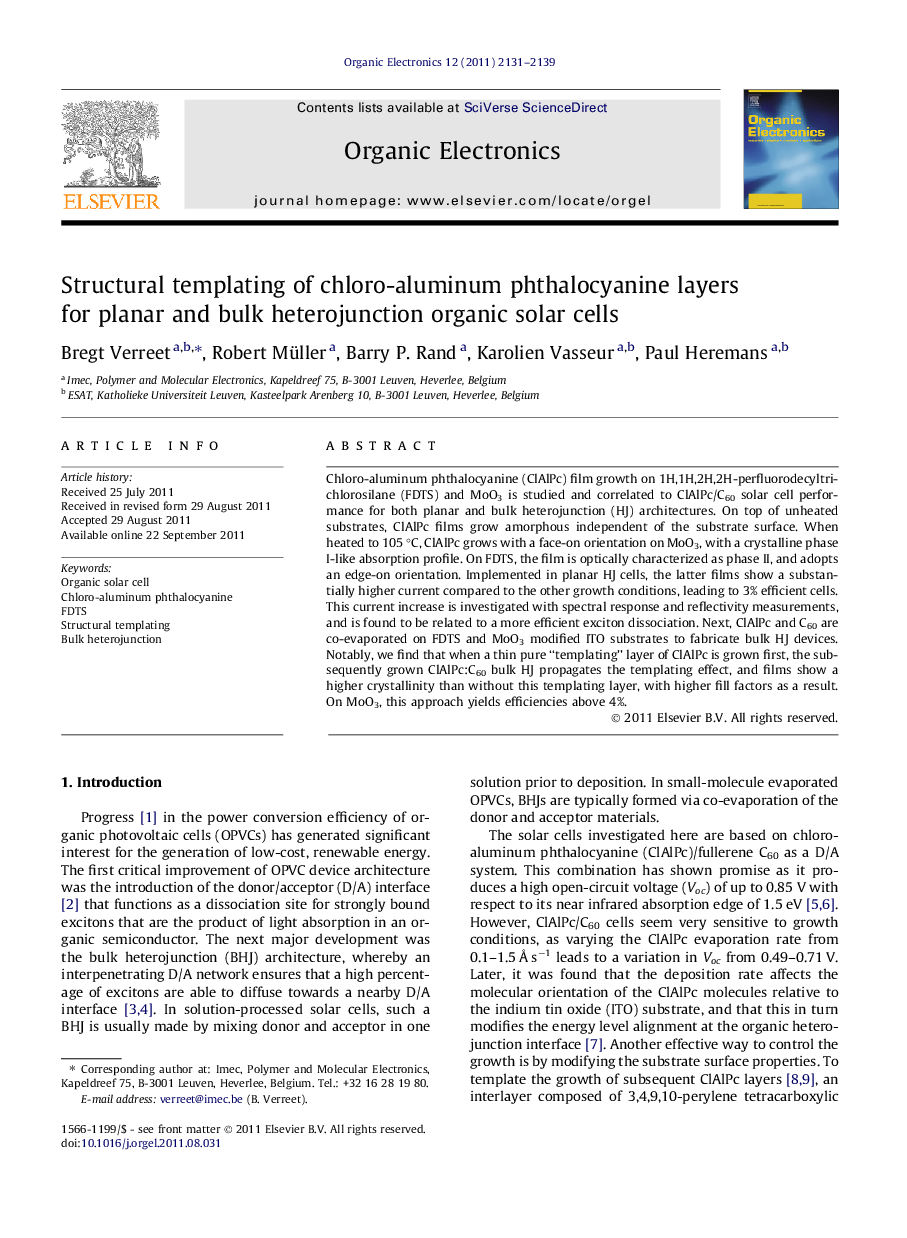| Article ID | Journal | Published Year | Pages | File Type |
|---|---|---|---|---|
| 1267572 | Organic Electronics | 2011 | 9 Pages |
Chloro-aluminum phthalocyanine (ClAlPc) film growth on 1H,1H,2H,2H-perfluorodecyltrichlorosilane (FDTS) and MoO3 is studied and correlated to ClAlPc/C60 solar cell performance for both planar and bulk heterojunction (HJ) architectures. On top of unheated substrates, ClAlPc films grow amorphous independent of the substrate surface. When heated to 105 °C, ClAlPc grows with a face-on orientation on MoO3, with a crystalline phase I-like absorption profile. On FDTS, the film is optically characterized as phase II, and adopts an edge-on orientation. Implemented in planar HJ cells, the latter films show a substantially higher current compared to the other growth conditions, leading to 3% efficient cells. This current increase is investigated with spectral response and reflectivity measurements, and is found to be related to a more efficient exciton dissociation. Next, ClAlPc and C60 are co-evaporated on FDTS and MoO3 modified ITO substrates to fabricate bulk HJ devices. Notably, we find that when a thin pure “templating” layer of ClAlPc is grown first, the subsequently grown ClAlPc:C60 bulk HJ propagates the templating effect, and films show a higher crystallinity than without this templating layer, with higher fill factors as a result. On MoO3, this approach yields efficiencies above 4%.
Graphical abstractFigure optionsDownload full-size imageDownload as PowerPoint slideHighlights► ClAlPc/C60 planar and bulk heterojunction (HJ) solar cells grown on MoO3 and on FDTS. ► On FDTS, a phase II, edge-on orientation leads to higher currents for planar HJs. ► On MoO3, the phase I, face-on orientation results in a greater open-circuit voltage. ► A pure ClAlPc layer prior to ClAlPc:C60 co-evaporation improves crystallinity. ► Use of such a templating layer leads to +4% efficient bulk heterojunction solar cells.
